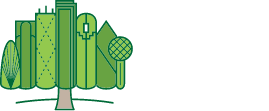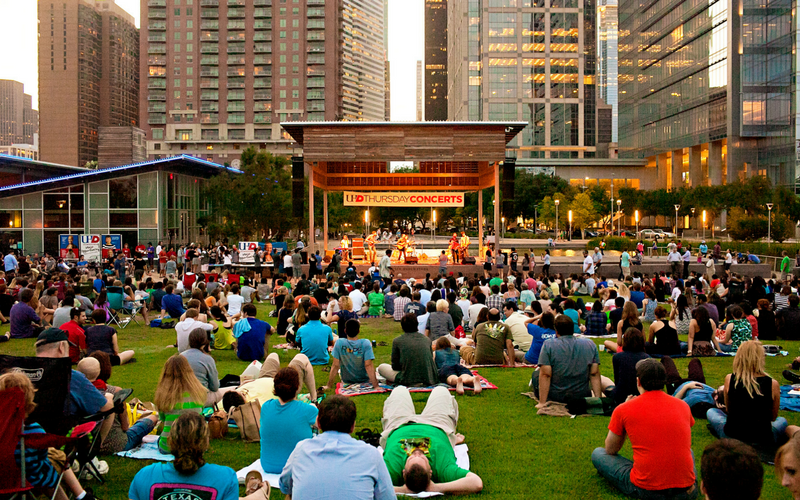We’re understandably quite proud of Dallas’ public park system and the more than 27,000 acres of green space it makes available to our 1.3 million (and counting) citizens. However, that pride doesn’t prevent us from looking to other cities for inspiration as well. All across the U.S., large metropolises are transforming slabs of concrete into amenity-rich urban oases.
Whether your idea of a city park entails cosmopolitan destinations, ecofriendly initiatives or a simple stroll through nature, these innovative spaces deliver.
Civic Space Park (Phoenix, AZ)
From its initial construction to its grand opening in 2009, Civic Space Park in Phoenix, Arizona, has trained its focus on one thing: the local environment. This award-winning public park employs numerous design features to lessen the severity of Arizona’s hot summer days (a phenomenon Dallasites understand all too well), generate clean power and capture rainwater. More than 70 percent of the park’s surface area is shaded, and the park’s synthetic shade structures sport panels that don’t simply deflect solar energy — they harvest it. The park produces around 75 kilowatts of power, which is enough to offset its own electrical consumption. All park walkways have also been constructed using pervious concrete, meaning rainfall can seep through, minimizing storm runoff and reducing heat reflection.
Now almost 10 years old, Civic Park has revolutionized downtown Phoenix. Thanks to its proximity to local light rail and bus transit stations, residents from across the city can experience all the park has to offer, including live concerts, food trucks, public art installations and more.
Discovery Green (Houston, TX)
Our southern neighbor’s Discovery Green is a happening urban development that serves the city’s 2 million residents. Occupying approximately 12 acres, Discovery Green was designed by Hargreaves Associates, the firm currently at work on Downtown Dallas’ Carpenter Park. Discovery Green features a jogging trail, a one-acre lake, reading rooms, two dog parks and an amphitheater. It should come as no surprise, then, to learn that the park also places a strong emphasis on educational and cultural programming. Each week, Discovery Green is bustling with exercise classes, children’s entertainment, theater and dance performances, live music and even an outdoor market.
Since its completion in 2008, the park has helped spur numerous nearby developments, including a 346-unit high-end residential tower, office buildings and new hotels.
City Park (New Orleans, LA)
One of the oldest public parks in the country, City Park was founded in 1854 and is home to the world’s largest collection of mature live oak trees, with the oldest oak currently celebrating its centenary times eight. The 1300-acre green space is home to traditional park features such as walking trails, horse stables, a dog park, playgrounds and more. However, it’s also the setting for notable city attractions, from the New Orleans Museum of Art to the New Orleans Botanical Garden to a water park and an amusement park.
Those facilities aside, what makes City Park truly special is that it’s largely self-supporting thanks to user fees collected at these various attractions and donations from the park’s many admirers. In 2005, Hurricane Katrina left 95 percent of City Park submerged in floodwater. Total damages exceeded $43 million, but the public responded with overwhelming support, funding a significant portion of its repair.
Guthrie Green Park (Tulsa, OK)
Guthrie Green Park’s urban garden, pavilion, shaded paths and water feature are all the work of SWA, the design firm responsible for Dallas’ Katy Trail and soon-to-be Pacific Plaza. Once a truck yard, this 2.6-acre park is now home to everything from daily fitness classes and movie nights to Sunday concerts. The park also features an innovative “geo-exchange system,” an initiative which is helping reduce the energy costs (by up to 60 percent) for the neighboring nonprofit tenants of the renovated Tulsa Paper Company warehouse.
Guthrie Green has contributed significantly to a revitalization of the Tulsa Arts District. The park welcomes 3,000-plus visitors each week and has attracted around $150 million in public and private investments to the area.
Which parks around the country do you feel are doing it right? What would you like to see Downtown Dallas’ four new parks accomplish once they’re complete? Share your thoughts with us on Facebook and Twitter to keep this important conversation about our city’s future going.


